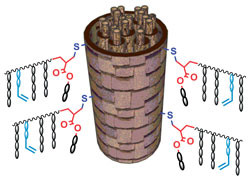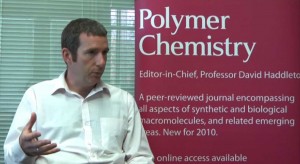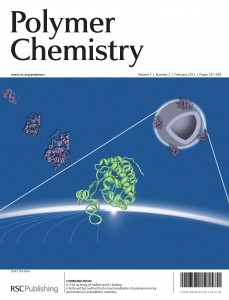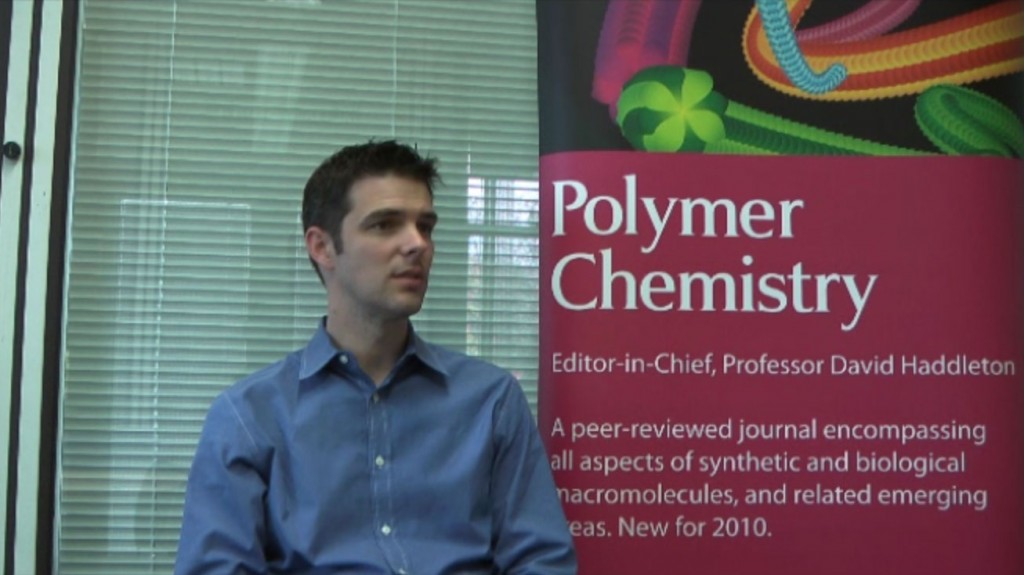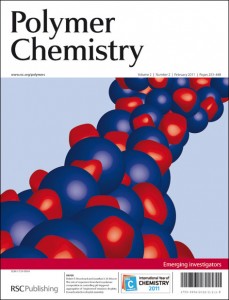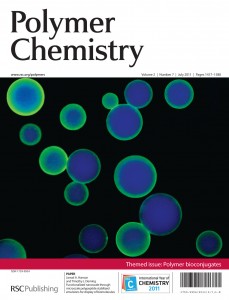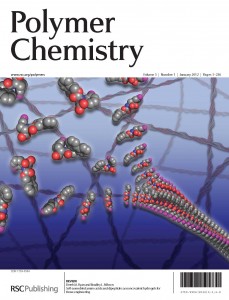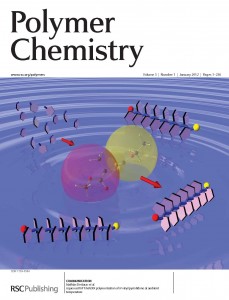This month sees the following articles in Polymer Chemistry that are in the top ten most accessed for May:
New methods of polymer synthesis
Christopher Barner-Kowollik, Jean-François Lutz and Sébastien Perrier
Polym. Chem., 2012, 3, 1677-1679
DOI: 10.1039/C2PY90007F
Thiol-ene “click” reactions and recent applications in polymer and materials synthesis
Andrew B. Lowe
Polym. Chem., 2010, 1, 17-36
DOI: 10.1039/B9PY00216B
Synthesis and post-polymerization modification of poly(pentafluorophenyl methacrylate) brushes
Kemal Arda Günay, Nicolas Schüwer and Harm-Anton Klok
Polym. Chem., 2012, Advance Article
DOI: 10.1039/C2PY20162C
Conjugated polymer nanostructures for organic solar cell applications
Jiun-Tai Chen and Chain-Shu Hsu
Polym. Chem., 2011, 2, 2707-2722
DOI: 10.1039/C1PY00275A
Diels-Alder “Click” Reactions: Recent Applications in Polymer and Material Science
Mehmet Atilla Tasdelen
Polym. Chem., 2011, 2, 2133-2145
DOI: 10.1039/C1PY00041A
GFP-inspired fluorescent polymer
Hongping Deng, Qi Zhu, Dali Wang, Chunlai Tu, Bangshang Zhu and Xinyuan Zhu
Polym. Chem., 2012, Advance Article
DOI: 10.1039/C2PY20223A
Supramolecular mimics of phase separating covalent diblock copolymers
Jingyi Rao, Emilia Păunescu, Mohammad Mirmohades, Ikhlas Gadwal, Abbas Khaydarov, Craig J. Hawker, Joona Bang and Anzar Khan
Polym. Chem., 2012, Advance Article
DOI: 10.1039/C2PY20125A
Functional block copolymer nanoparticles: toward the next generation of delivery vehicles
Maxwell J. Robb, Luke A. Connal, Bongjae F. Lee, Nathaniel A. Lynd and Craig J. Hawker
Polym. Chem., 2012, 3, 1618-1628
DOI: 10.1039/C2PY20131C
Thermoresponsive polymer brush-functionalized magnetic manganite nanoparticles for remotely triggered drug release
Stéphanie Louguet, Bérengère Rousseau, Romain Epherre, Nicolas Guidolin, Graziella Goglio, Stéphane Mornet, Etienne Duguet, Sébastien Lecommandoux and Christophe Schatz
Polym. Chem., 2012, 3, 1408-1417
DOI: 10.1039/C2PY20089A
Facile fabrication of flower-like nanocomposite microparticles via seeded miniemulsion polymerization
Jianan Zhang, Xuewu Ge, Mozhen Wang, Mingyuan Wu, Jianjun Yang and Qingyun Wu
Polym. Chem., 2012, Advance Article
DOI: 10.1039/C2PY20193C
Why not take a look at the articles today and blog your thoughts and comments below.
Fancy submitting an article to Polymer Chemistry? Then why not submit to us today!












